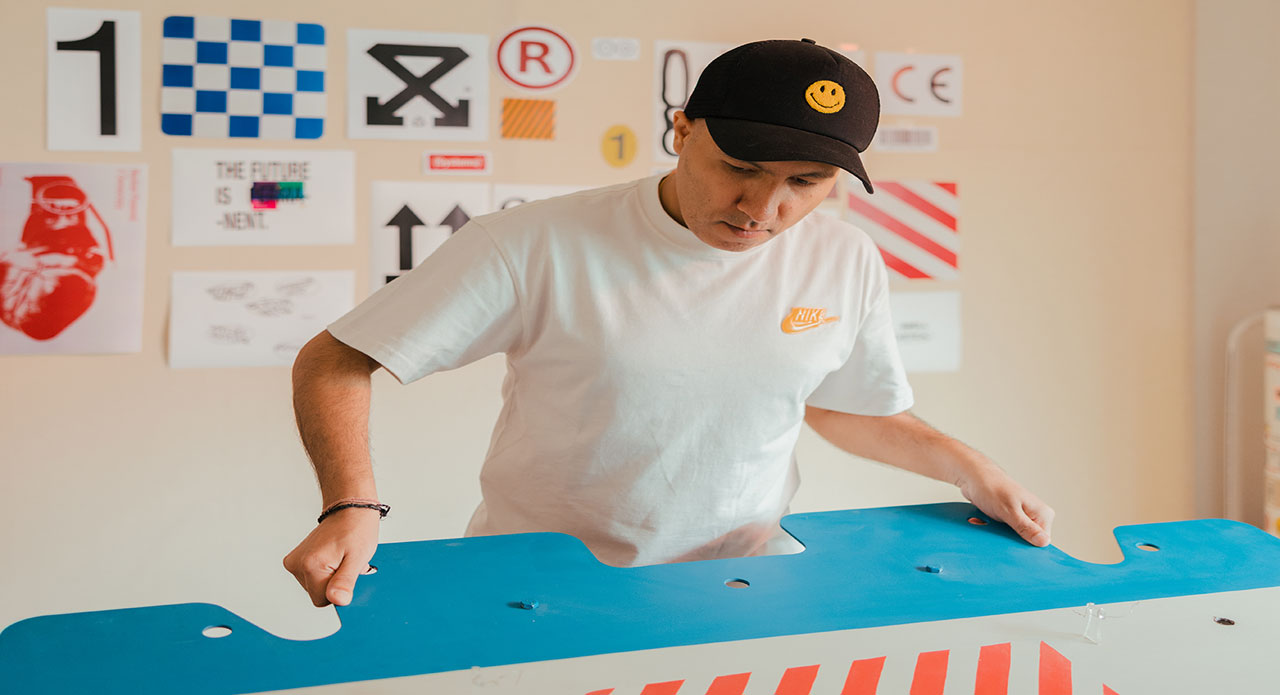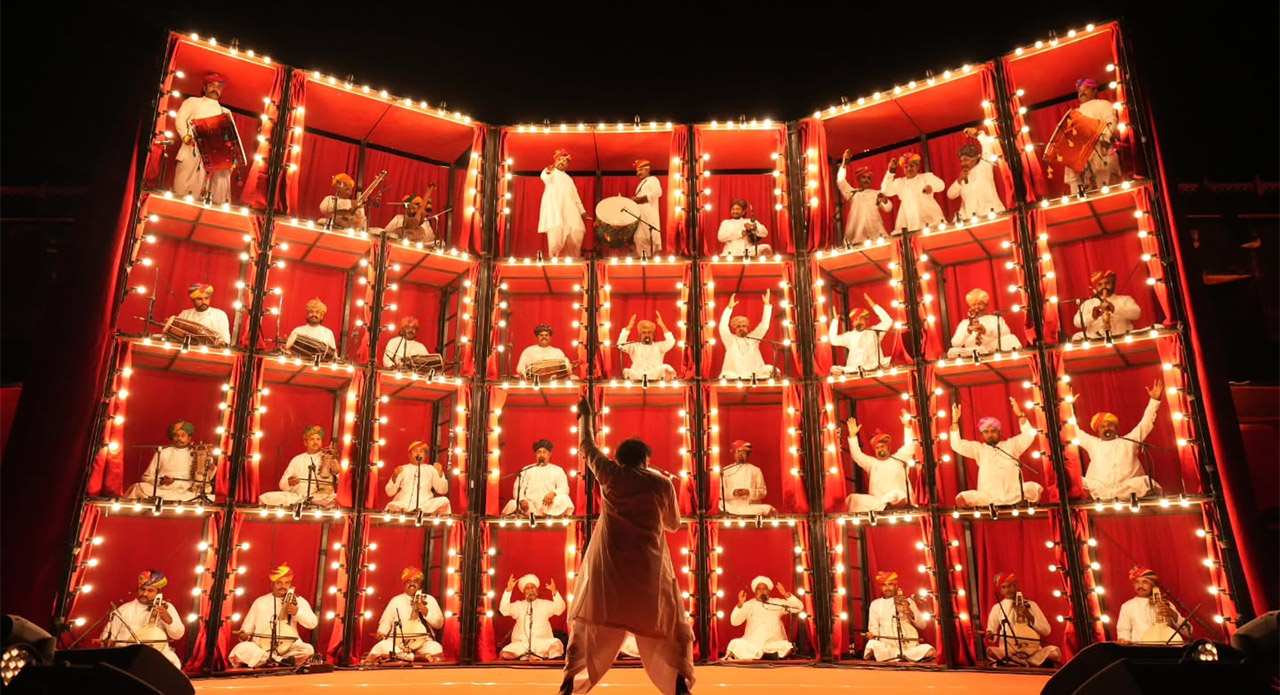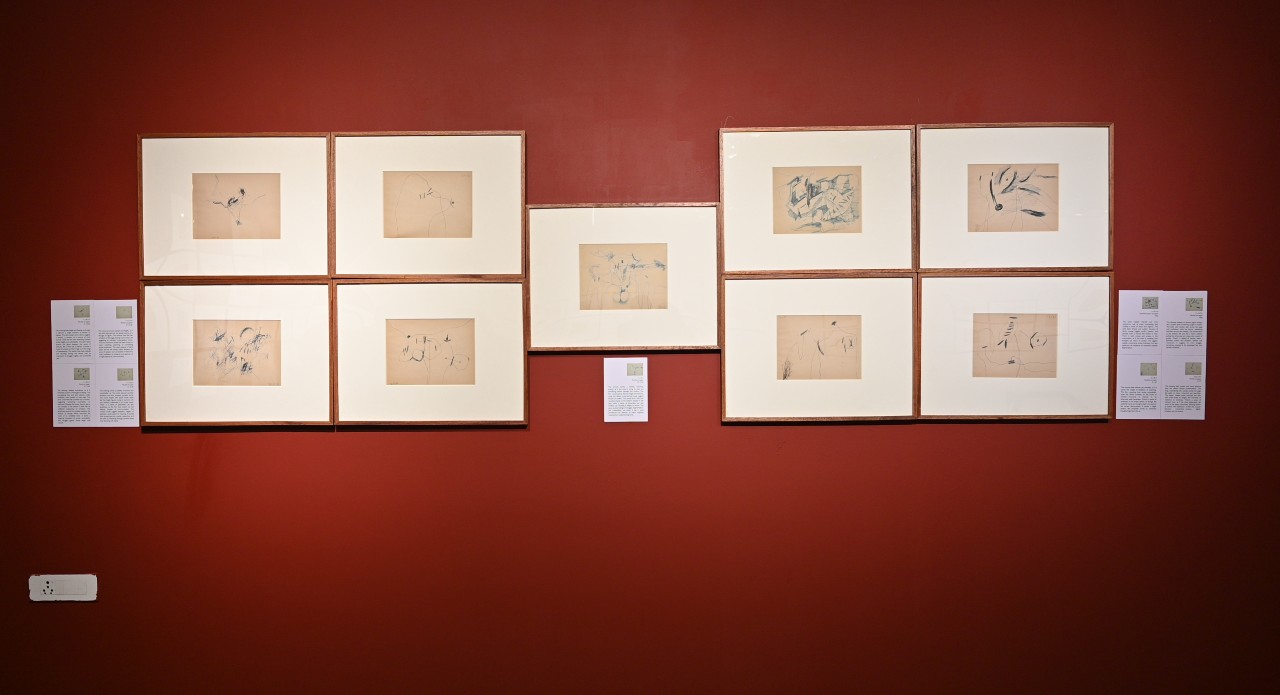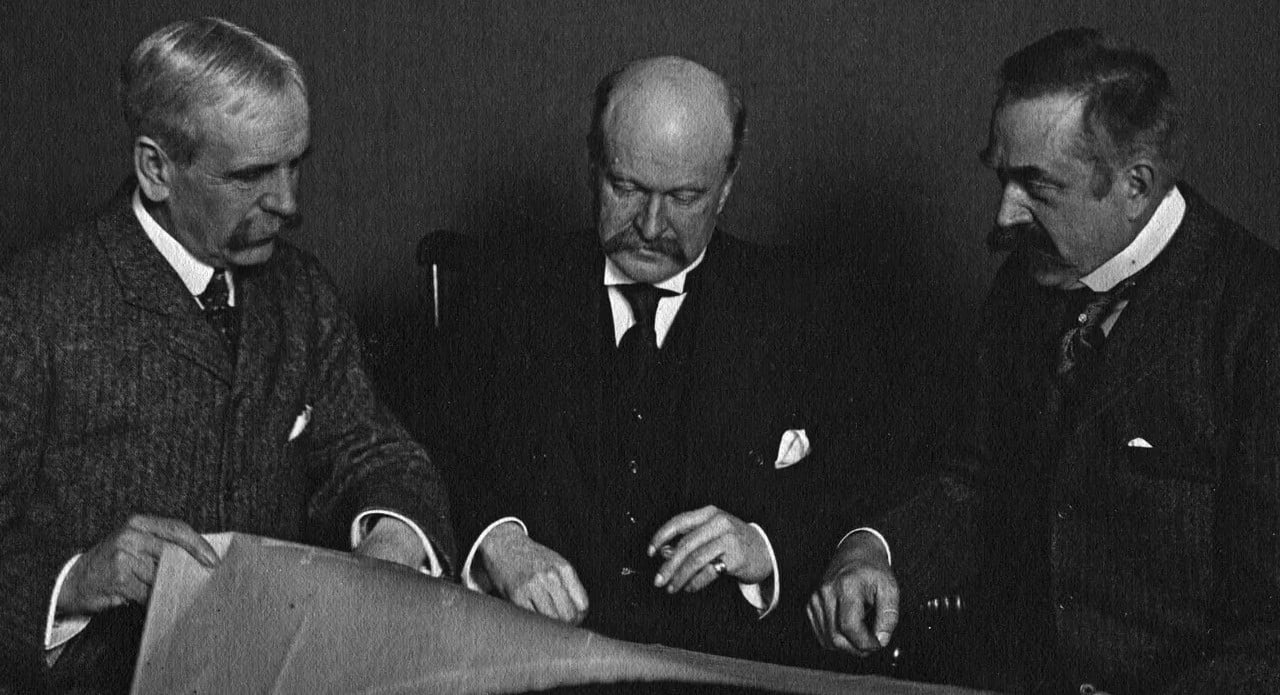In the digital era, the pinnacle of popularity is measured by the ‘virality’ of an idea—a construct that marketing gurus and social media mavens find hard to master and harder still to templatise into a fool-proof formula. For Jayesh Sachdev, however, it comes organically—‘breaking the internet’ is second nature to the national award-winning artist, entrepreneur, and multidisciplinary creative.
Sachdev hit the spotlight in 2022 when he started an AI-generated artwork series on Instagram. Inspired by elaborate Indian bridal couture, the series featured, astronaut brides, aliens, Disney characters and fully feline families (Menagerie Series).
View this post on Instagram
A few months later, he again became a conversation starter with his AI-generated visuals of Ganesha installations made of balloons at ‘Art Basil’, a spoof of the Swiss art fair, Art Basel.
View this post on Instagram
Sachdev is also the founder of the fashion label, Quirk Box and QuirkBox Design Studio. Since 2011, the brand has been redefining fashion and lifestyle with its art-inspired designs. It has become a canvas for wearable eccentricity, blending contemporary art, vibrant colours, bold graphics, and sophisticated playfulness. The design studio continues with the same philosophy to cater to branding, packaging, graphic design, etc.

Sachdev firmly believes that art is an evolutionary craft and by no means should creativity be restricted. In the last two years, he has dabbled not just in digital art mediums, but has also pushed the boundaries of accepted ideas of art forms such as Mughal miniature paintings, Renaissance paintings and even folk art. His most recent showcase, titled ‘Oorja: A Tapestry of Evolving Energy’, explored the idea of what energy means to us via a collection of visual and sound-based art. With Indian mythology at its core, his artworks draw inspiration from powerful symbols in Indian culture, weaving together a tapestry of cultural narratives and universal energy.
In a conversation, Sachdev riding high from his recent collaboration with global fashion retailer Zara—the first-ever Indian artist to unveil a limited-edition capsule collection titled ‘Reverie—and from the success of his showcase at Tao Art Gallery in Mumbai shares his inspirations and how he hopes his art impacts and motivates people.
View this post on Instagram
Edited excerpts:
1. Where did the idea of exploring ‘energy’ for your art showcase come from?
The idea came from observing the constant flux in nature and existence—how energy transforms but never disappears. This universal force is central to life and the world around us which inspired me to explore it through art. Whether it’s the movement of nature, the cycles of birth and death, or even the emotional and spiritual energy that people radiate, it became clear to me that energy is the most essential and dynamic force in existence.
2. How is your Oorja series manifesting the idea of ‘energy’?
Oorja visually represents energy’s dynamic nature through vibrant, fluid forms and symbolic elements, constantly shifting and intertwining, much like the energy itself—always in motion. Whether it’s the flowing form of an elephant or the fierce movement of a tiger, each piece represents the ceaseless journey of energy as it shifts between states, much like the transformations we experience in life.

3. What about the Hindu mythology attracted you to make it a key feature in this series?
Hindu mythology offers such a rich tapestry of narratives that are deeply symbolic of cosmic energies and the cycles of life, death, and rebirth. The myths often represent energy as a living force, whether through gods like Kali, who embodies destruction and renewal, or Ganesha, who is the remover of obstacles and the provider of new beginnings. The philosophical depth and the vivid imagery of these deities naturally aligned with the core ideas I wanted to express in Oorja. Hindu mythology also emphasises the interconnectedness of all beings, and this sense of unity, of being part of a larger cosmic dance, is central to my vision.

4. Your fascination with the animal kingdom continues with the subjects for Oorja with tigers, elephants, and more.
Animals are powerful symbols of raw energy in nature, each embodying different aspects of it. Tigers represent strength and raw power, while elephants signify wisdom and stability. Cows, deeply revered in Hindu culture, symbolise nurturing and sustenance. Each animal in the Oorja series is not just a creature but an avatar of energy, each with its own unique form of expression. By weaving them into the series, I’m channelling these primal, instinctual forces into my exploration of energy, showing how the animal kingdom is just as vital a part of the cosmic balance as any other element.

5. Some pieces seem inspired by the Golden Age of Comic while others have a very psychedelic vibe. Can you share the thought process behind opting for these styles?
I find that the visual language of the classical comics, with its bold lines and exaggerated forms, perfectly captures the larger-than-life energy I want to convey. It brings a sense of urgency and dynamism that aligns with the action and movement I see in energy itself. On the other hand, the psychedelic aesthetic allows me to delve into the more surreal, metaphysical aspects of energy. A glorification, superhero-eque representation of character.

6. You use iconic art styles such as comic books in Oorja and miniature art in your last series, Utopian Dystopia, and then make them your own in an inimitable way. What drives this creative reimagination for you?
I’m drawn to reinterpreting iconic styles to make them more personal and relevant to the themes I’m exploring. This approach allows me to explore tradition while also pushing boundaries with contemporary narratives. I’m able to create a dialogue between the familiar and the unexpected. It’s in this reimagining that I feel I can truly express the dynamic concepts I explore, whether it’s energy, Utopia/dystopia, or transformation.
View this post on Instagram
7. You’ve gained tremendous traction on social media for your ingenious and creative use of AI in art. Has AI played a role in Oorja too? If yes, how?
For this series, I wanted to keep the process more organic, focusing on my strength as a graphic and visual artist to explore the fluid, ever-changing nature of energy. The tactile connection to the medium felt essential in conveying the concepts of transformation and interconnectedness. While I’ve used AI in previous works, Oorja is a return to a more intuitive artistic process.
8. Are you envisioning this as ‘wearable art’ in a fashion collection?
Absolutely, the idea of transforming art into wearable pieces is second nature to me, with my brand Quirk Box having been a “Wearable Art” label for a decade. Wearable art is a natural extension of my creative expression, translating artwork into a new medium. It allows art to live and breathe beyond traditional spaces, enabling people to engage with it on a more personal, intimate level.

9. For Oorja, people can touch and feel the art to better connect with it. Do you think your approach to art makes it more approachable?
Typically, in traditional art spaces, touching the artwork is discouraged to preserve the piece’s integrity. However, I am intentionally breaking that convention by inviting viewers to engage directly with the artwork. This marks a significant shift, and it’s the first of its kind in India—a sound-interactive painting being exhibited in a mainstream art gallery. It’s a multi-sensory, immersive experience where people are encouraged to touch, listen, and even feel the vibrations of energy within the piece. By allowing this tactile interaction, the artwork becomes more than just a visual experience; it’s engaging in a way that appeals to all senses, creating a personal and emotional connection with the viewers.
This interactive approach transforms the artwork into something accessible and relatable to a wider audience. It becomes an experience rather than just an observation, making the art far more approachable to people, who might feel intimidated by the traditional gallery setting.
10. Why is it important for art to be accessible to one and all?
Art has the power to inspire, provoke thought, and even heal, but it can only do so if it’s accessible to everyone. It should be something that everyone can experience and engage with, regardless of background or education. When art is made accessible, it becomes a shared cultural experience, fostering a sense of community and collective understanding. This is especially important in today’s world, where the themes of transformation and interconnectedness that I explore in Oorja are more relevant than ever.
Lead Image: Tidal Surge Kaali & Dawon, 2024 Acrylic on canvas by Jayesh Sachdev











